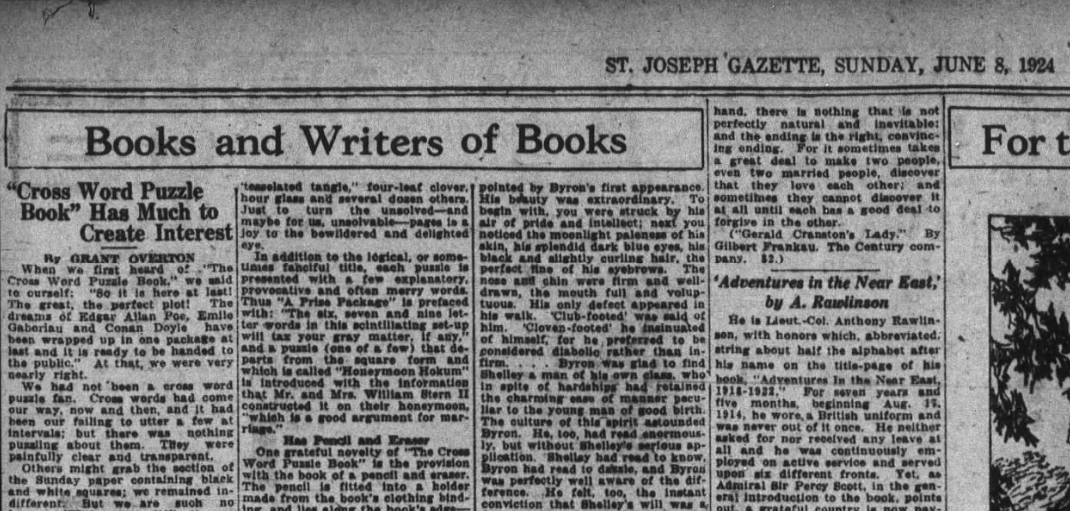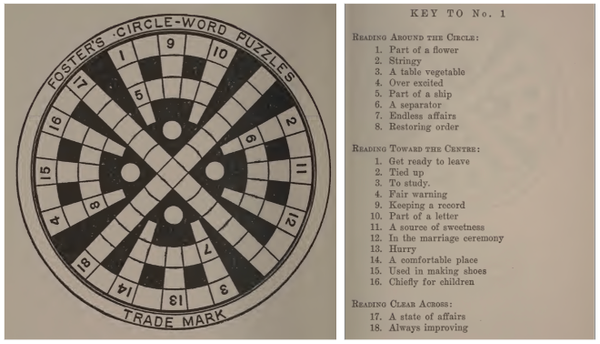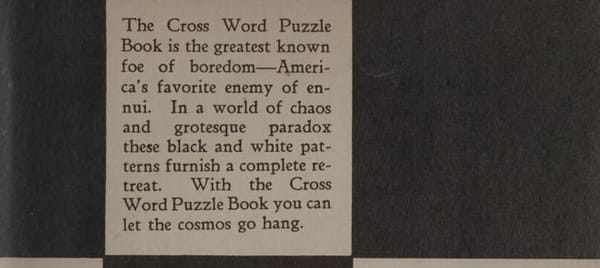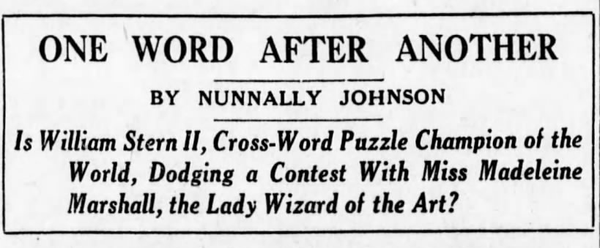“We had not been a cross word puzzle fan.”

As we've discussed in these pages, crossword puzzles had been around for a decade or so by the time The Cross Word Puzzle Book was published and the hobby snowballed into a craze in 1924. The format already had fans — and indeed, some of the earliest reviews seemed to be celebrations of the idea of a book of crosswords, more than of this particular collection.
But they were still new enough that at least some reviewers felt the need to explain the concept of crossword puzzles altogether. In one lengthy review from June 1924, the syndicated columnist Grant Overton explains the puzzle thusly:
What are cross word puzzles? A big white square is divided into maybe 225 little squares. Certain of these little squares are blackened. The white squares remaining are numbered horizontally and vertically. To each number belongs a word, spelling across or down. The pattern of words is so contrived that the spelling runs both ways. Each number is supplied with a definitions—supposed to give you the clue to the word called for. And, of course, the number of white squares until you come to a black square tells you how many letters make the word. Easy? You try a few, yourself!
Overton describes his conversion. He had “not been a cross word puzzle fan,” and went into it skeptically. He seems to have been won over by editor F. Gregory Hartswick's introduction to the book, which he quotes at some length. A section of that introduction:
Solving a cross word puzzle offers numerous enjoyments of which the uninitiated are ignorant. There is the pure esthetic stimulation of looking at the pattern with its neat black and white squares, like a floor in a cathedral or a hotel bathroom; there is the challenge of the definitions, titillating the combative ganglion that lurks in all of us; there is the tantalizing elusiveness of the one little word that will satisfactorily fill a space and give clues to others that we know not of; and there is the thrill of triumph as the right word is found, fitted, and its attendant branches and roots spring into being.
Hartswick's enchantment seemed to be contagious. Back to Overton, in the glow of the puzzle grids:
And then follow the fifty selected cross word puzzles. They burst upon you with a dazzling radiance of black and white symmetries. Each has some gay and weird and sometimes very intricate pattern effect. There are Greek crosses, there's a tetracruciform, one facetiously called the Baby Grand Model, a four-petalled rose, a spotted border... Just to turn the unsolved—and maybe for us, unsolvable—pages is a joy to the bewildered and delighted eye.
The image quality on this scan is not the clearest, but we've included the full review below for those curious.




